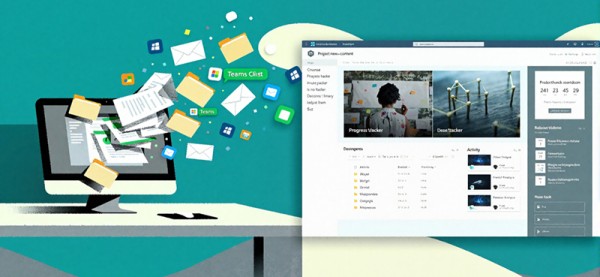
The Power of a Single Pane of Glass: Transforming Organisational Efficiency
Is your team struggling with legacy systems getting in the way of instant and seamless collaboration? Now more than ever before, organisations are seeking ways to streamline operations and enhance productivity.
One powerful solution that has gained significant traction is the concept of a "single pane of glass." This approach involves consolidating various tools, data, and functionalities into a unified interface, providing a comprehensive view of an organisation's IT ecosystem. Let's explore how this concept benefits organisations.
What is a Single Pane of Glass?
A single pane of glass is a central place where you can see information from different systems all in one view. This dashboard lets you review, manage, and analyse data from many sources in real-time. By not having to switch between different tools, a single pane of glass makes decision-making easier, improves efficiency, and boosts productivity.
Benefits for Organisations
- Better decision-making: With a single pane of glass, leaders can see real-time data from different sources, helping them make quick and informed decisions. This reduces mistakes and ensures important information is always available.
- Increased efficiency: By combining tools and data into one place, organisations can streamline workflows and save time. This allows employees to focus on important tasks, driving productivity.
- Improved collaboration: A unified interface helps teams work better together by sharing information. This improves communication and coordination, leading to more effective teamwork.
- Cost savings: Using a single pane of glass can save money by reducing the need for multiple software licenses and maintenance. The improved efficiency also means better use of resources and lower operational costs.
- Enhanced user experience: A single pane of glass offers an easy-to-use interface, making it simpler for employees to access and manage information. This leads to higher adoption rates and greater satisfaction.
Benefits for Users
The benefits of a single pane of glass for users are many and impactful. Here are some key advantages:
- Centralised location of operation: Users can access all necessary tools and data from one place, saving time and reducing frustration.
- Enhanced user experience: A single pane of glass offers an easy-to-use interface, making it simpler for users to navigate and manage information.
- Increased efficiency: By combining information into one view, users can quickly find and use the tools they need, boosting productivity.
- Effortless automation: A single pane of glass allows for seamless workflow automation, reducing manual effort and enhancing efficiency.
- Improved collaboration: With a unified interface, users can easily share information and work with team members, improving communication and coordination.
- Holistic data view: Users can see data from multiple sources in real-time, helping with better decision-making and problem-solving.
- Time savings: Quick access to critical information reduces the time spent searching for data, increasing productivity.
- Customisable interface: Users can personalise their interface to suit their needs, making it easier to find and use the tools they need.
Real-World Application: Information Leadership's Workspaces
At Information Leadership, the single pane of glass concept is key to our iWorkplace workspaces. Our goal is to create a seamless digital workplace by integrating various elements into one interface. This not only improves user experience but also eliminates unnecessary systems, leading to greater efficiency and productivity.

From engineering firms wanting a single view of projects, through to complex Council property record searches, our workspaces also support:
- Local government teams managing permits, compliance documentation, and public requests in one central interface.
- Healthcare organisations consolidating patient records, policy updates, and staff communications securely.
- Legal and compliance teams tracking case files, contracts, and audit trails without switching between multiple systems.
- Finance departments bringing together reports, approvals, and sensitive documents while maintaining governance and access controls.
- Facilities and asset managers monitoring maintenance schedules, inventory, and supplier communications from a unified dashboard.
By bringing all these critical functions into one place, teams save time, reduce errors, and can focus on strategic work rather than navigating fragmented systems.